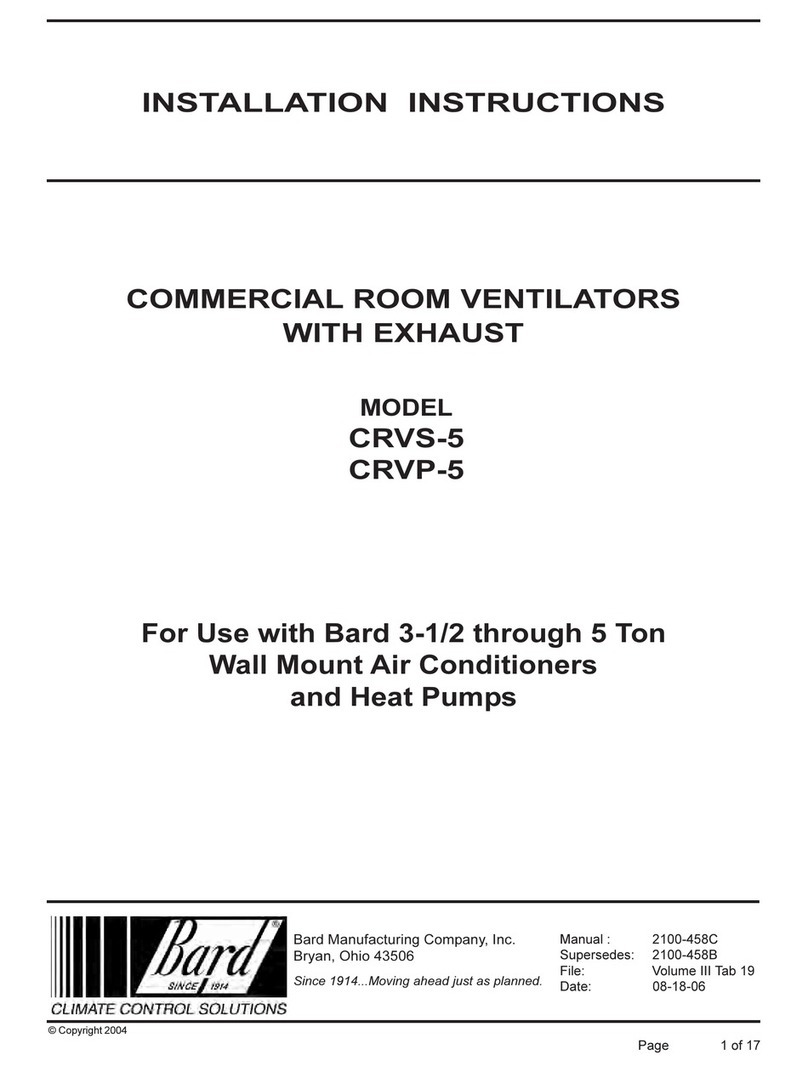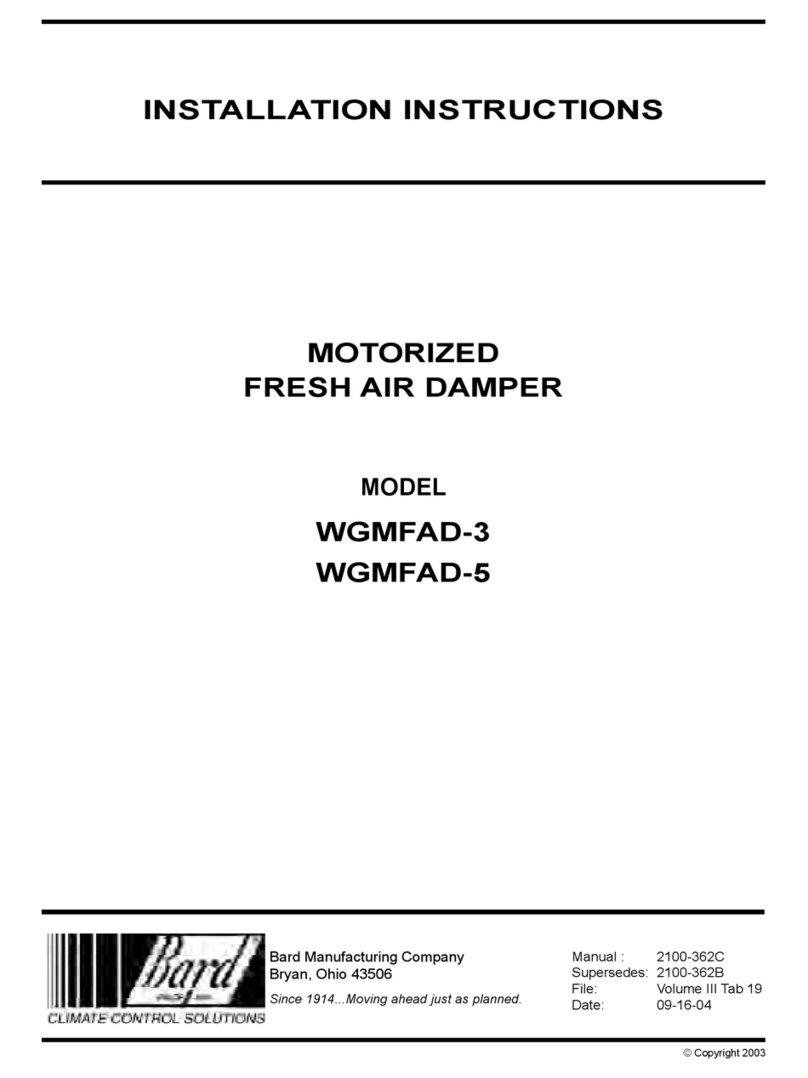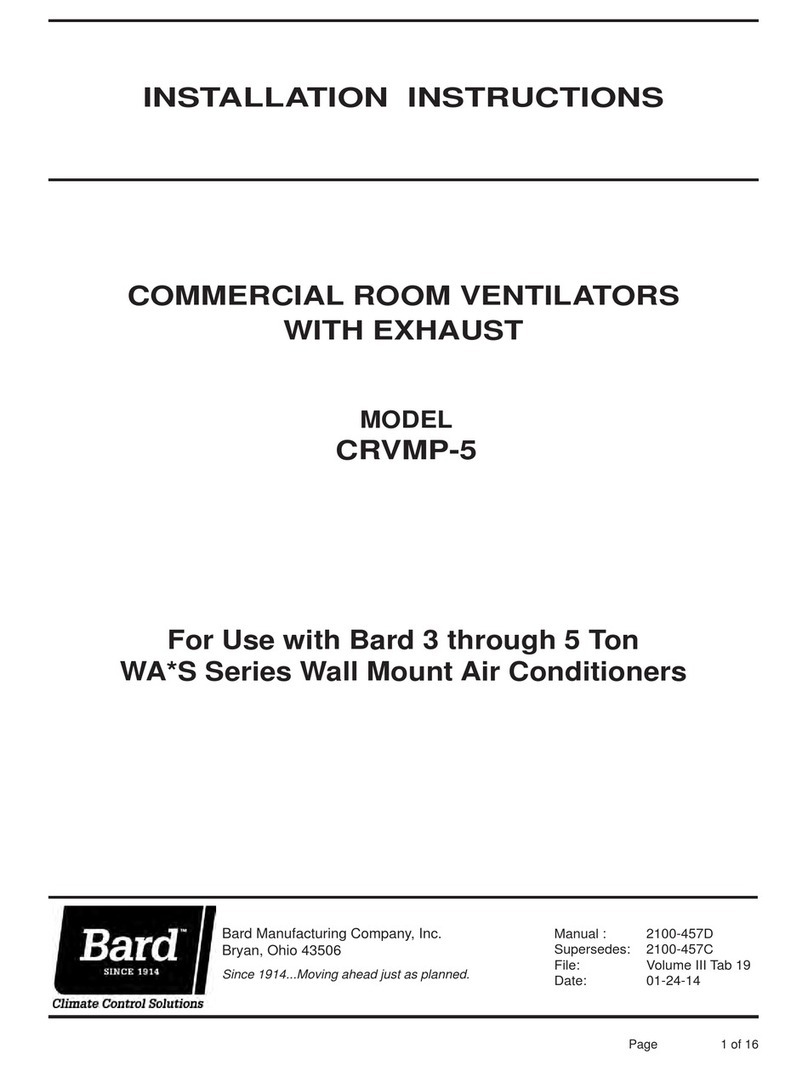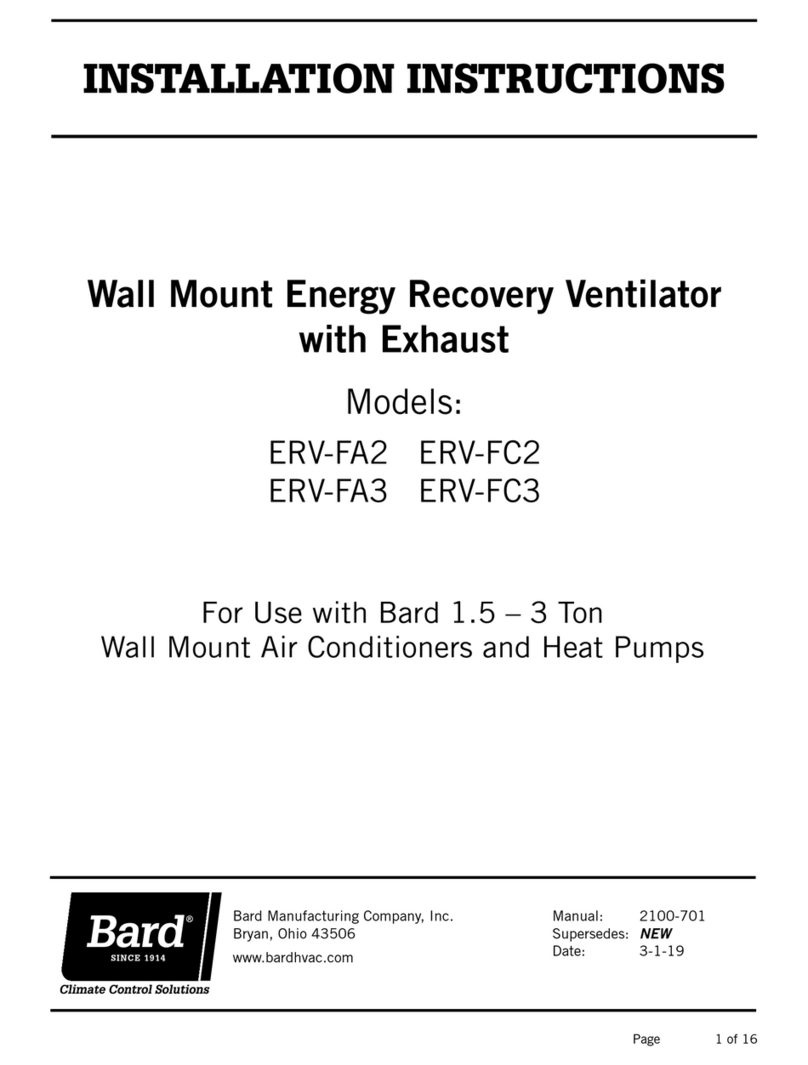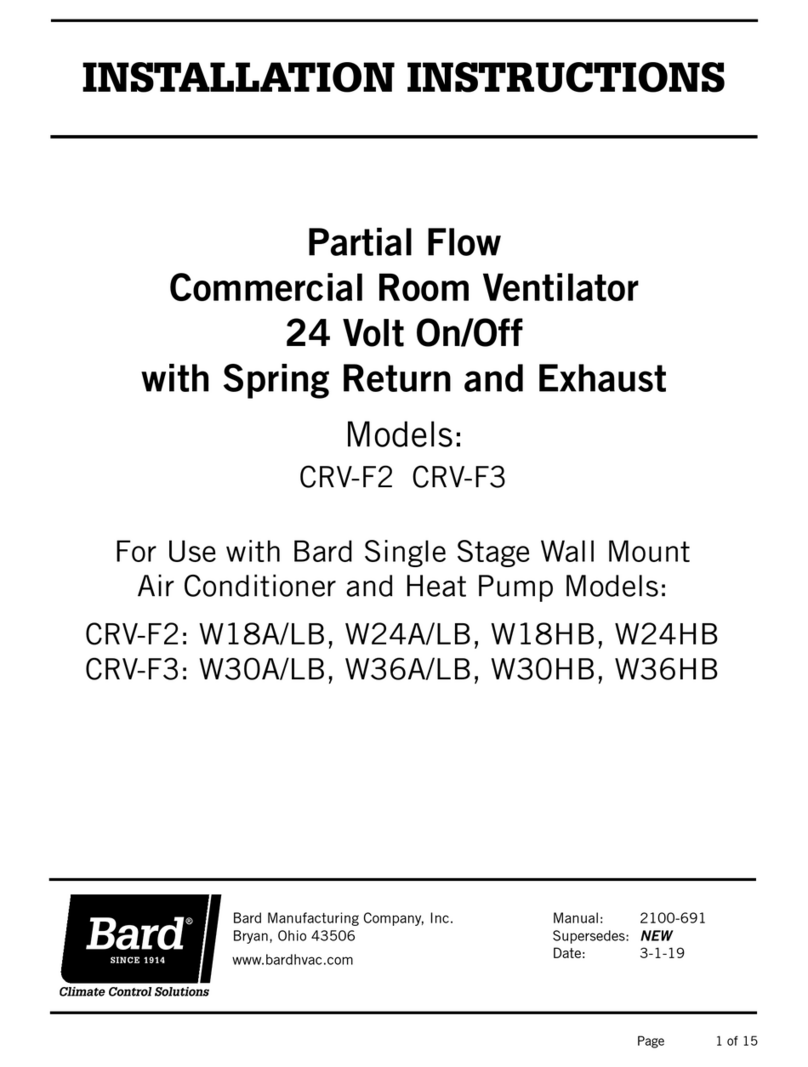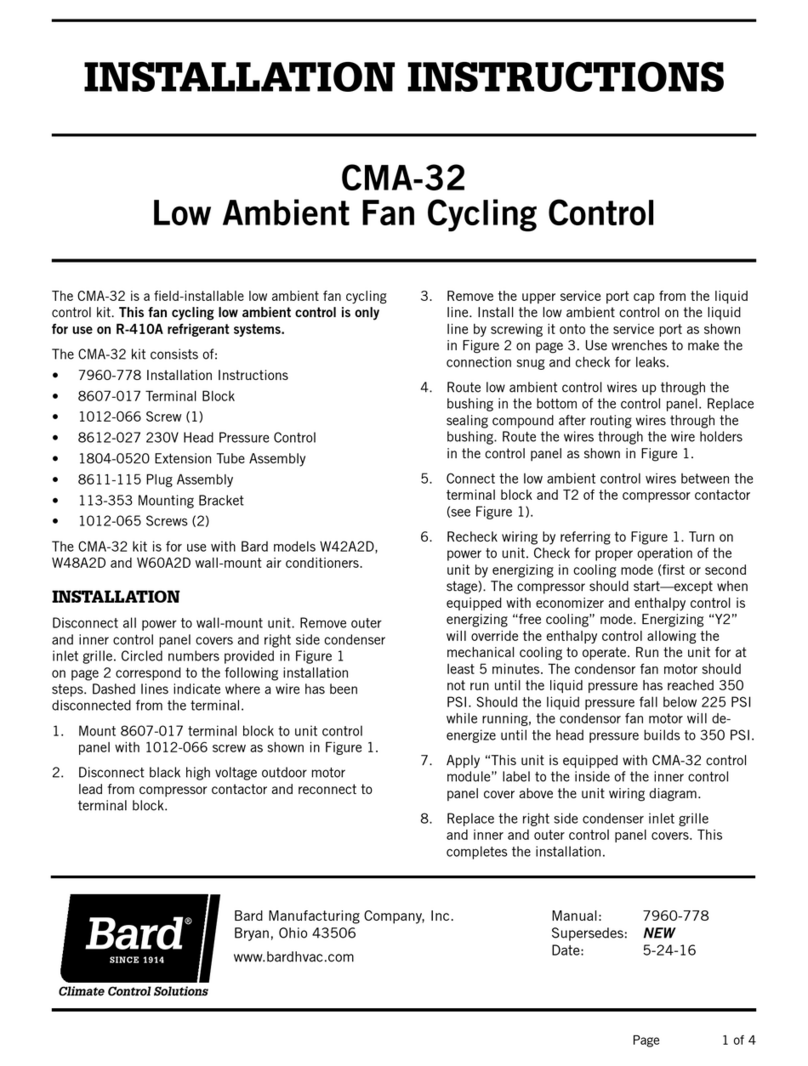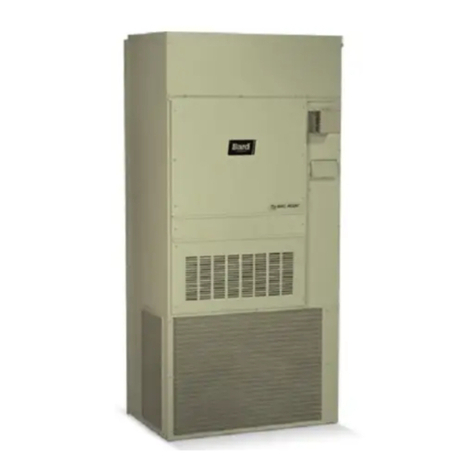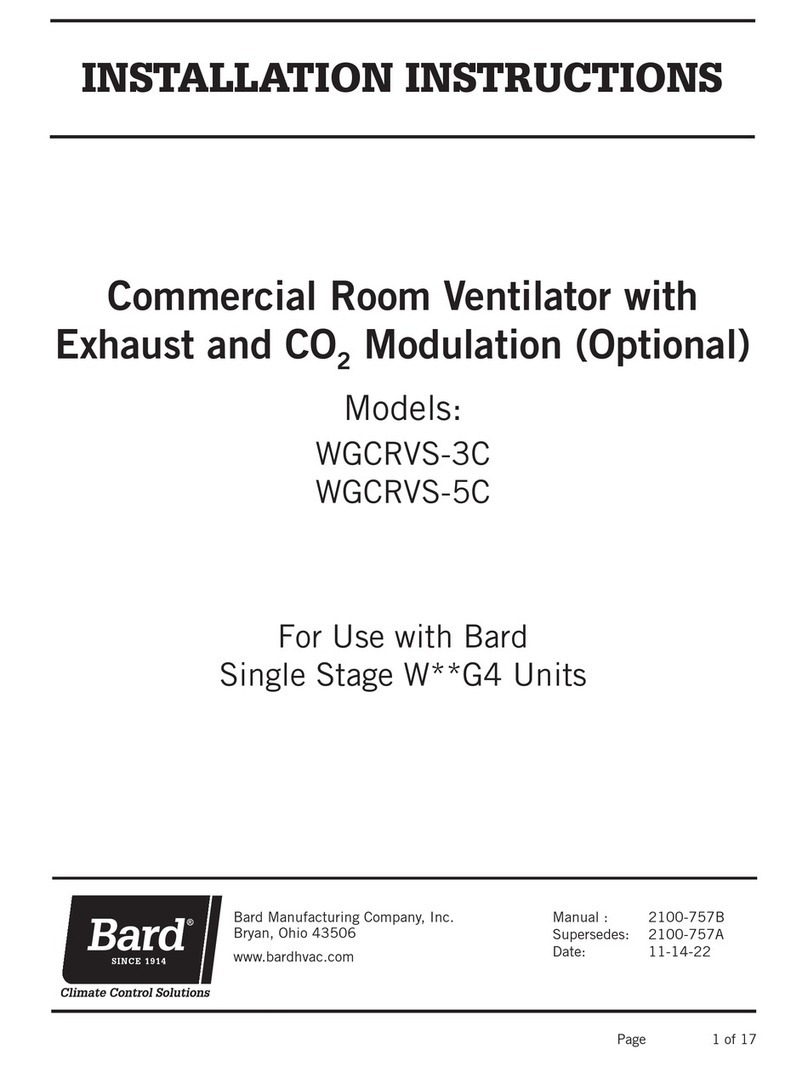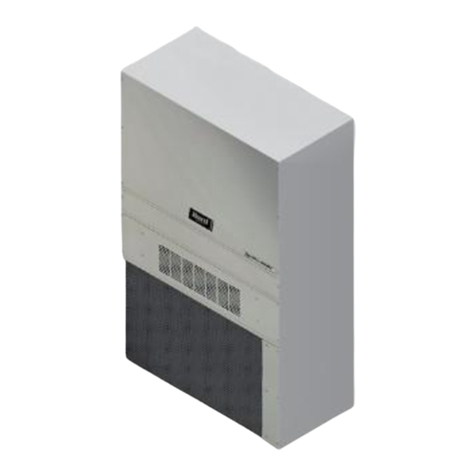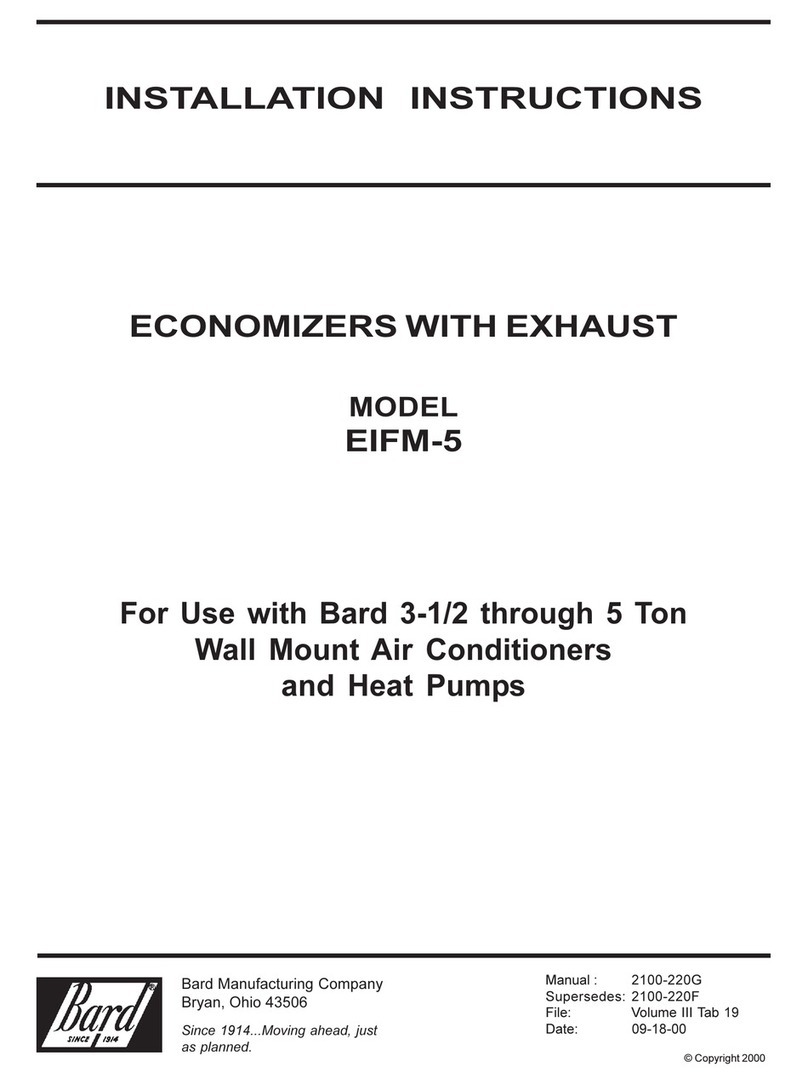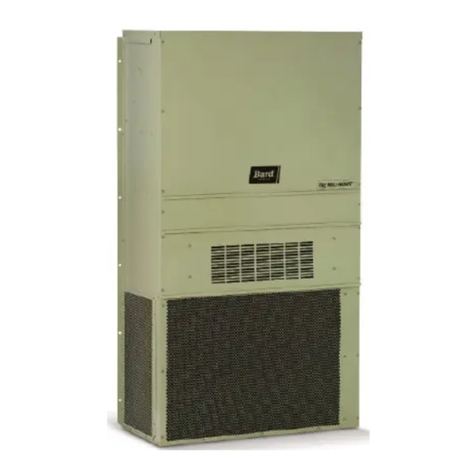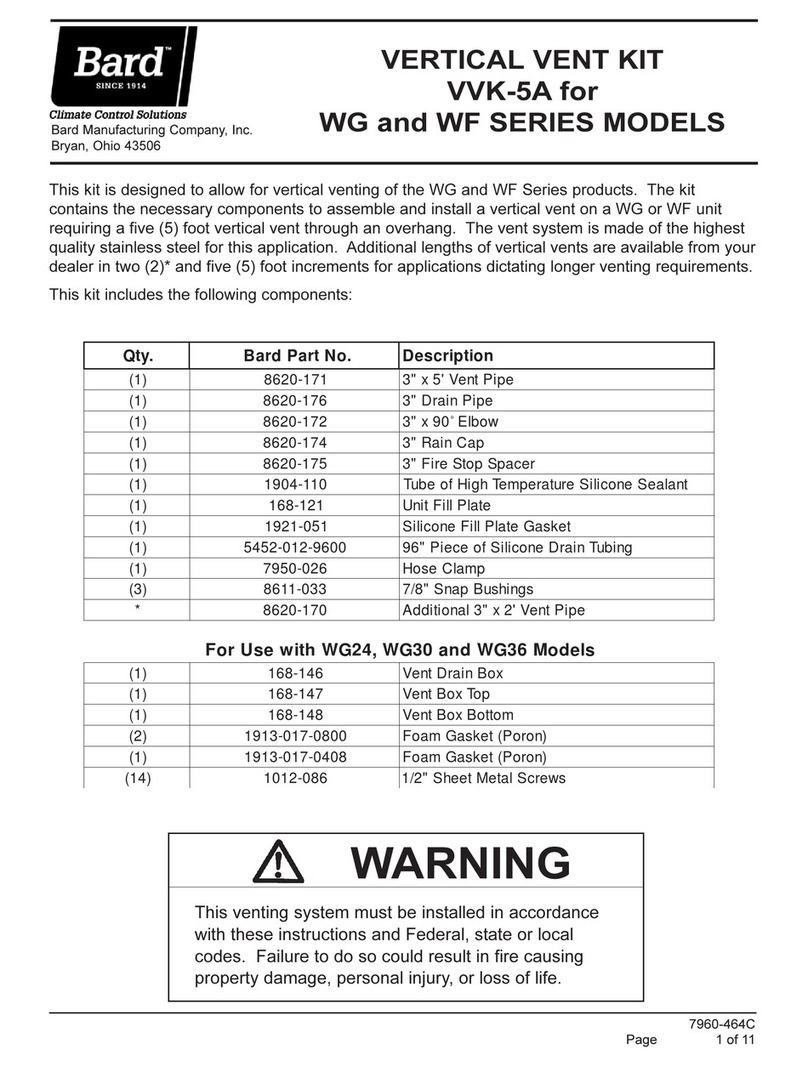
Manual 2100-760
Page 10 of 17
"V" Option CRV Sequence of Operation
The “V” Ventilation option includes a control board with
blade positioning potentiometers along with an input
for a 2-10V input signal (see Figure 6).
Adjustable potentiometers:
“PP” Potentiometer setting: This potentiometer can be
used to adjust the blade setting for outdoor air intake
during a pre-purge cycle. The pre-purge cycle time is
based on the setting of the pre-purge timer.
“OCC” Potentiometer setting: This potentiometer can
be used to adjust the blade setting for outdoor air
intake when the “01” terminal is energized on the low
voltage terminal strip indicating occupancy.
“Y1” Potentiometer setting: This potentiometer can be
used to adjust the blade setting for outdoor air intake
when the “Y” terminal is energized on the low voltage
terminal strip indicating 1st stage cooling or Balanced
Climate operation. When energized, it overrides the
“OCC” potentiometer setting.
“Y2” Potentiometer setting: This potentiometer can be
used to adjust the blade setting for outdoor air intake
when the “Y1” terminal is energized on the low voltage
terminal strip indicating 2nd stage cooling operation.
When energized, it overrides the “OCC” and “Y1”
potentiometer settings.
Pre-Purge Feature
Pre-purge is used to ventilate a specied CFM amount
before occupants enter the room or structure. The
control board has a built-in pre-purge timer that can
be set to 30-, 60- and 90-minute intervals by moving
the jumper noted in Figure 5 on page 9. This timer will
start when the jumper is installed and the "01" terminal
is energized on the low voltage terminal strip. Blade
adjustment can be made on the PP potentiometer.
Once the timer has timed out, the board will default
to the occupied setting and this blade position can
be adjusted on the OCC potentiometer. If the timer is
set to 0 (off—shipped position), the occupied setting
is instantaneous and the pre-purge setting (PP) is no
longer in the sequence.
Occupied Setting
Occupied is used to ventilate a specied CFM amount
when occupants enter the room or structure. The
control board will energize the occupied setting
after the pre-purge cycle, or if pre-purge is disabled
immediately when the "01" terminal is energized on the
low voltage strip. Blade adjustment can be made on the
OCC potentiometer.
Y1 Setting
Y1 is used to ventilate a specied CFM amount when
Y cooling is energized. The control board will energize
the Y1 setting when Y is energized on the low voltage
strip. Blade adjustment can be made on the Y1
90
60
30
0
FIGURE 6
CRV Control Board
potentiometer. This potentiometer setting overrides the
OCC occupied setting.
Y2 Setting
Y2 is used to ventilate a specied CFM amount when
Y1 cooling is energized. The control board will energize
the Y2 setting when Y1 is energized on the low voltage
strip. Blade adjustment can be made on the Y2
potentiometer. This potentiometer setting overrides the
OCC occupied and the Y1 setting.
2-10V Operation
A CO2sensor or other device sending a 2-10V signal
can be used to control the damper motor. Two control
methods are available to control the damper motor:
• Method 1: The control board will accept a
2-10VDC signal with a resistive load greater than
5000 ohms. Bard CO2sensor 8403-096 can be
used when the 2-10V output is connected to the
blade connector on the unlanded gray wire from
the CRV, located near the unit low voltage terminal
strip. The occupied OCC potentiometer setting
must be set to the off position for total modulation.
The OCC potentiometer can be used to maintain a
minimum blade position when "01" is energized.
• Method 2: The damper motor will accept a
2-10VDC signal with a resistive load less than
5000 ohms. This method involves bypassing the
control board and powering the motor directly from
the device providing the 2-10VDC modulating
signal. The gray wire connected to CO2VIN on the
control board must be spliced with the white wire






